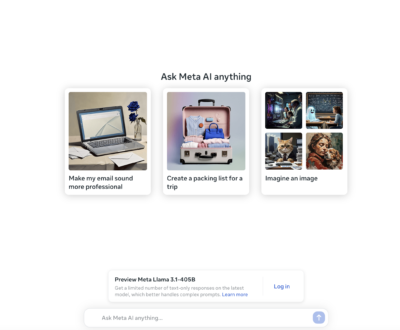Different Models to Hire Azure Developers: Choosing the Right Fit
- October 18, 2024
- Blog
Looking at how the role of cloud computing is unfolding in the management of business processes, Microsoft Azure has provided a platform for overseeing the management of cloud resources. Combined with other factors like flexibility, scalability and a comprehensive list of services offered it is the most suitable choice for organizations interested in digital transformation. Still, the main problem of using Azure as a service is its need for competent human resources for drawing and, especially, fine-tuning of cloud environment. For this reason, it is important for businesses that need the service of Azure developers to consider the following matters.
To help you better understand what we strive for, in this blog, we will describe several models to hire Azure developers and discuss how to pick the right approach for your business. Thus, regardless of whether the organization requires IT staff augmentation services, IT outsourcing, or Managed IT solutions, the choice of a hiring model must be made to guarantee project outcomes, grow capability, and, ultimately, manage costs efficiently.
Different Models to Hire Azure Developers
1. In-House Hiring Model
The in-house model of hiring pertains to the recruitment of Azure developers to be employees of your organization. Usually, companies advertise vacancies, sort candidates, and hire developers to be their workers, not contractors.
Advantages
Complete Control: Most development processes and resources remain fully within the companies’ control, thus promoting that Azure developers work under the company’s objectives.
Collaboration: Closer cooperation with internal teams enhances faster decision-making as well as better and more efficient coordination.
Dedicated Focus: They also keep one focused on your projects with little or no outside pressures, enhancing long-term project commitment from the developers.
Challenges
High Costs: Wages, incentives, and other emoluments can many a time increase this model’s price if your finances appears to be confined.
Time-Consuming Hiring Process: It can take quite some time to recruit, interview, and onboard professional Azure developers for the company.
Limited Scalability: However for organizations with small-scale projects, the in-house model may not prove to be flexible or sustainable enough.
2. Freelance Hiring Model
Definition and Process
In this model of hiring, the companies hire Azure developers as freelancers on per per-project or per-hour basis. This approach is common with organizations that seek external help for temporary needs of organizations especially for minor tasks.
Advantages
Flexibility: Freelance developers can be employed at convenient schedules. Which may be suitable for organizations that require developers for articles or some given period.
Cost Savings: Freelancers may turn out to be cheaper than employing full-time staff. Thereby doing away with the constant dumping of salaries and other emoluments.
Quick Onboarding: Independently contracted employees are easy to recruit and implement for short-term or urgent positions.
Challenges
Quality and Reliability: This is always a big issue when working with freelancers. As one might have a lower quality than the other or suddenly stop communicating.
Less Control: Freelancers are not your regular employees and you might find it difficult to dictate how or what they have to do.
Lack of Long-Term Commitment: Long-term or a project that needs a freelancer to be always involved is not ideal for freelancers.
3. Outsourcing Model
Definition and Process
In the outsourcing model, the companies hire third-party IT outsourcing company to manage their Azure cloud services. In this model, contracts and subcontracts relating to projects or particular processes are delegated to external suppliers.
Advantages
Access to a Large Talent Pool: Outsourcing eliminates the need to look for competent Azure developers in a specific location. As it opens the market to worldly developers say from India, which is famous for technical people.
Focus on Core Business Functions: Some of the benefits that outsourcing has to businesses include. The business can set its priorities on its central operations while the technical areas are dealt with by specialists.
Reduced Management Responsibility: With outsourcing, the Azure cloud user has no responsibility for managing the cloud infrastructure. It is done by the outsourcing provider.
Challenges
Potential Communication Gaps: Third-party vendors are used in developing effective software. And may cause some issues because the teams may be from different time zones thus complicating communication.
Dependency on External Providers: Outsourcing of these activities is likely to lower your control over such mechanisms for performance.
Lower Control Over Processes: You may not have an idea of how the project works. Since you are likely to delegate the management externally.
4. Staff Augmentation Model
Definition and Process
IT Staff Augmentation model allows organizations to directly access professionals outside of the organization. It is on an as-needed basis for internal work with Azure development. They assumed this model would allow businesses to grow their teams without the stagnant fixed positions.
Advantages
Scalability: With IT staff augmentation services advantages include; flexibility of staffing. You can cater to the rise in demand for staffing during certain periods of the year or particular projects.
Access to Expertise: You can always hire external resources whenever needed. Such as specialized Azure developers, DevOps engineers, or cloud engineers whenever you find a gap in your team.
Reduced Hiring Risks: In general, augmented staff are usually outside the organization so there is less probability compared to having full-time employees.
Greater Control: That is why staff augmentation allows more control over development in comparison with outsourcing.
Challenges
Shorter Integration Time: External developers require time to penetrate the existing working environment and fit into the working plans.
Resource Management: External resources are also more likely to pose certain challenges relating to management and generally may need more coordination.
Internal Coordination: To this end, some serious issues regarding the relations between the internal team and the augmented staff are to be discussed.
5. Managed Services Model
Definition and Process
The managed services model means engaging a Managed IT services provider who takes responsibility of the Azure cloud operation, surveillance, and support.
Advantages
Continuous Support: Even better, with the help of MSPs, your Azure environment is constantly updated and fine-tuned to perfection.
Proactive Maintenance: MSPs watch over your infrastructure and sort out problems before they fester and cause downtime.
Cost-Effective: It is costlier in the short term, but it may work out more economical if the business requires a constant, consistent solution for its cloud environment.
Challenges
Less Customization: As mentioned before, MSPs mainly provide standardized commodities. And there may be no adequate freedom to provide services based on the required business needs.
Loss of Control: The disadvantage is that its organization has professional management. And that somewhat does not allow the direct control of cloud operations.
6. Hybrid Hiring Models
Definition and Process
Staffing hybrid is a derived from the integration of various hiring models. Including internal teams/shared services or teams and freelancers and staff augmentation and managed services models.
Balanced Control and Flexibility: Businesses can preserve important procedures’ management with the simultaneous use of external resources within the hybrid model.
Access to Diverse Talent: This model also helps businesses to have access to a vast number of talented Azure developers as well as cloud engineers.
Tailored Approach: It allows you to select your approach at hiring depending on your project’s nature and scale of project.
Challenges
Complexity in Management: Having several teams cooperating on various contracts and working conditions can be problematic and needs good organizational skills.
Coordination Across Models: Having in-sourced, out-sourced, and augmented teams into one project requires deep coordination.
Key Factors to Consider When Choosing the Right Model
Project Size and Duration: A low-cost but sometimes low-quality solution may be freelance while staff augmentation may be ideal for long-term projects.
Budget Constraints: Independent contractors and using outsourcing frameworks will take less resources compared to hiring people within the company.
Level of Expertise Required: In more specified niches, such as DevOps engineers’ usage or complicated cloud settings, it is helpful to use the staff augmentation or IT outsourcing strategy.
Control and Flexibility: Assess the level of demand needed, and the level of openness needed throughout the project life cycle.
Scalability: Select models that offer you the opportunity to expand your team and acquire new solutions as you expand your business.
Wrapping Up
Selecting the right model to hire Azure developer is a critical success factor for project and future sustainability. Besides, in-house hiring and staff augmentation, IT models have their benefits and drawbacks. Accordingly, each of the models can be chosen depending on such aspects as size and cost of the project, and your competence and ability to scale up.
Staff augmentation or going with a hybrid model is the best course of action when companies are unsure about how they should hire Azure developers. Do you have a thriving Azure team already in your organization? Get in touch with our IT staff augmentation services now or IT outsourcing services to hire the dedicated Azure developers for your company’s requirements.
Frequently Asked Questions
1. How does OrangeMantra remain confident that they have good developers?
The azure team of professionals at OrangeMantra is highly skilled. They have passed through a strict hiring process and embraces professionals with extensive prowess in Azure development. The team in our company has extensive knowledge about the cloud architecture and what Microsoft DevOps and Azure are all about.
2. Does OrangeMantra provide an approachable methodology for Azure development services?
Yes, at OrangeMantra the strategy is custom-made specifically for your business and its needs. Whether clients require complete outsourcing of services, hiring of dedicated staff, or outsourced managed services, we adjust our Azure development services to the scale our clients need.
3. How does OrangeMantra manage the collaboration of the teams it hires with the in-house staff members?
OrangeMantra has an advanced approach to project management that implies proper relations between the internal and external teams. We give you technologies and processes that address issues of communication, project control, and coordination to achieve the desired flow
4. Can OrangeMantra help in working on large-scale Azure projects?
Absolutely! In situations where businesses will be needing long-term internal employees or just a reinforcement for IT experts for longer Azure projects, OrangeMantra has the skills that can fit such a long-term Azure project which conforms to the needs of the business as it continu
About us and this blog
We are a digital marketing company with a focus on helping our customers achieve great results across several key areas.
Request a free quote
We offer professional SEO services that help websites increase their organic search score drastically in order to compete for the highest rankings even when it comes to highly competitive keywords.










